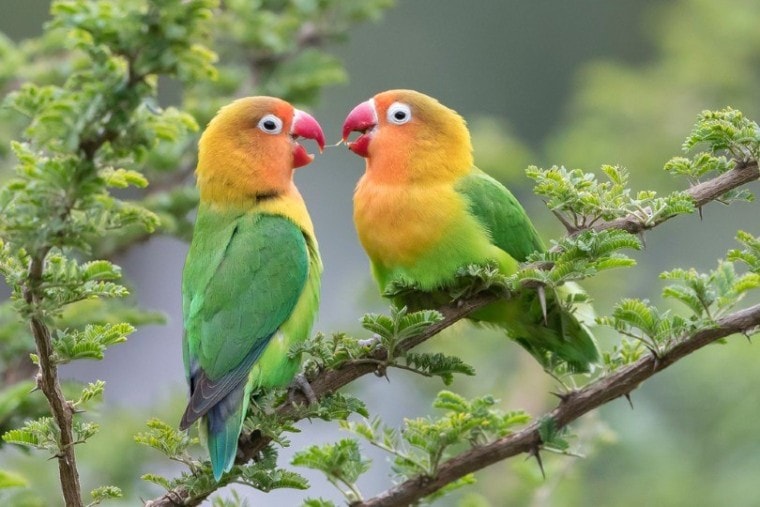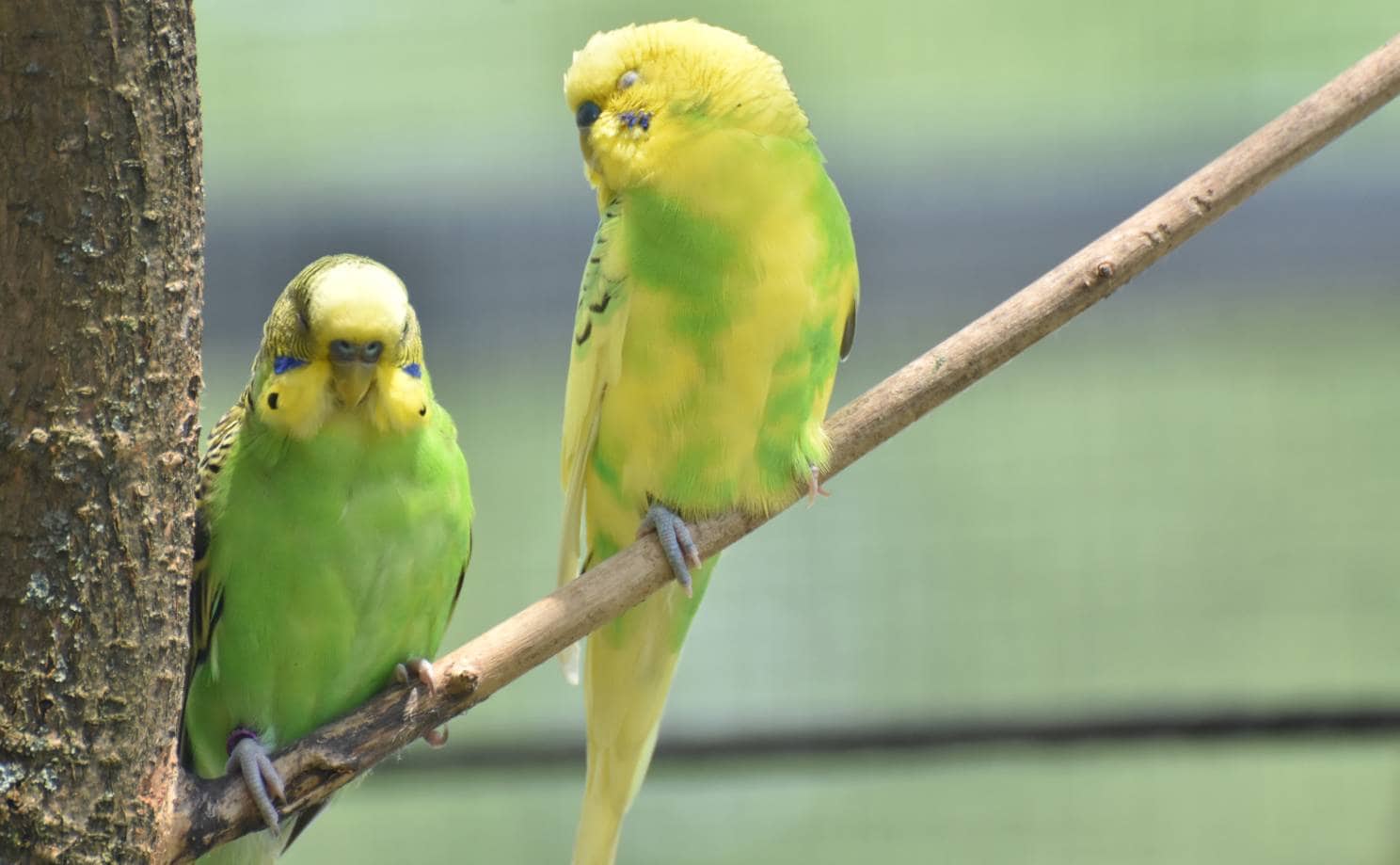
Click to Skip Ahead
Lovebirds are absolute sweethearts, known for their deep devotion to their mates. They warm our hearts with their adorable actions and bouquet of sounds. One of the things owners love most about them is their knack for singing and whistling.
But have you ever wondered just what it means when your lovebirds make certain noises? You’ve probably heard quite a few by now. If you’re curious about your bird’s vocalizations, let’s have a listen and learn their language. Knowing what they’re trying to tell you makes it easier to bond and communicate with your lovebird.
The 9 Lovebird Sounds & Their Meanings
Birds are very vocal—just like us. They use a series of clicks, chirps, and shrieks to get their point across. If you want to uncover these cute—or sometimes startling noises—let’s hear from our lovebirds themselves.
The 7 Happy Sounds
1. Mimicking
Lovebirds don’t have extensive vocabularies like some friends of flight. However, they can mimic noises and certain sounds. In this clip, you can hear that the lovebird is repeating the noises she hears from her person.
Many lovebirds do this to communicate with you. They address what you do and repeat it back—as a way to say, “I’m listening,” or, “I can do that, too!”
2. Clicking
Clicking noises indicate that your lovebird is trying to get your attention. Or you might hear them make this noise when they are playing off by themselves. It’s almost a concentrated action, especially if they really have their mind set on something.
Clicking is their way of saying, “I’m interested,” or, “Come play!”
3. Whistling
Just like humans, whistling is usually a pretty good indicator that your lovebird is really enjoying the moment. They might whistle happily to you, others, or each other. Certain things that happen can bring out this action, whether they are very excited or just having a good old fashioned time.
They might be saying something like, “Is anyone else having fun?”
4. Crooning
Many times, crooning takes place between lovers. You may hear all sorts of softer, chirpy noises in combination with body language—like turning their head to the side with feathers out to encourage petting.
Crooning comes with a lot of positive body language. They’re usually saying something like, “It’s time for love and cuddles.”
5. Squawking
Squawking might not be the most pleasurable sound, since it’s typically high-pitched and noisy. But you can see in this video, the little bird is wondering what in the world this other creature is doing. Something isn’t quite right, but he’s still curious and wants to play.
He might be asking the other bird to explain what’s going on. Or saying, “Why won’t you talk to me?”
6. Chirping
When your lovebird chirps, it’s almost as if they’re trying to tell you a story. This is their way of talking right to you. It’s one of the most interactive noises since they are fully focused with sights set on you. It’s such a sweet gesture of comfortability and communication between other bird friends and human folk alike.
They might be trying to engage with you, telling you all the important birdy whispers and latest gossip.
7. Singing
Could there be anything more adorable than watching your lovebirds sing with joy? Singing is how you can tell your lovebird is completely content and totally at peace with what’s happening. Much like whistling, singing is a good indicator that the mood is right and everything is beautiful in their eyes.
Your bird might just be humming, “Oh, what a wonderful world.”
The 2 Unhappy Sounds
8. Screaming
Screaming can indicate a few things and it’s usually a sound that’s accompanied by other non-vocal cues. It can mean they’re unsure sometimes. So, if your bird acts a bit nervous, flighty, or frantic—they might not know what to think about what’s happening—but they’re still in high spirits.
In human language, you might think of it as, “I don’t know what’s going on, but I’m going to find out.”
9. Growling
Are you annoying your little lovebird? Well, sounding the growl is letting you know that they’ve had enough. This is a sound that says that they want whatever it is to back off and leave them alone. It can be quite funny to watch, but also remember to respect your bird’s boundaries—you don’t want them to stay aggressive over being antagonized.
This bird seems to be saying, “Oh, jingly keys? Well, I’m going to get them. Take that!”
Learning Silent Cues
It doesn’t just stop with cute or cringy sounds. You can read their body language so much, too. It speaks volumes!
Posture
Normal, happy posture happens when your lovebird’s body is totally content. They will still be alert and wide-eyed, but relaxed otherwise.
Lovebirds show uncomfortable or unhappy posture when their feathers are flared and their head is down. Any hissing noises are a threatening sound, too.
Eyes
Eyes speak volumes about the kind of mood your bird is in. Eyes accompany body movements and vocalizations to tell you just what it means. Your bird’s irises can change depending on how they’re feeling.

Final Thoughts
Once you get to know your little feathered friend, you’ll know what they’re thinking most of the time. You’ll get to know their little quirks, moods, and pet peeves—helping your little one feel comfortable and understood. Your lovebird will know if they aren’t getting the recognition they need when they’re trying to communicate.
It’s so fascinating to learn just how interactive these little birds can be. They have their own language that they really teach us when we’re willing to listen.
Featured Image Credit: Ward Poppe, Shutterstock









